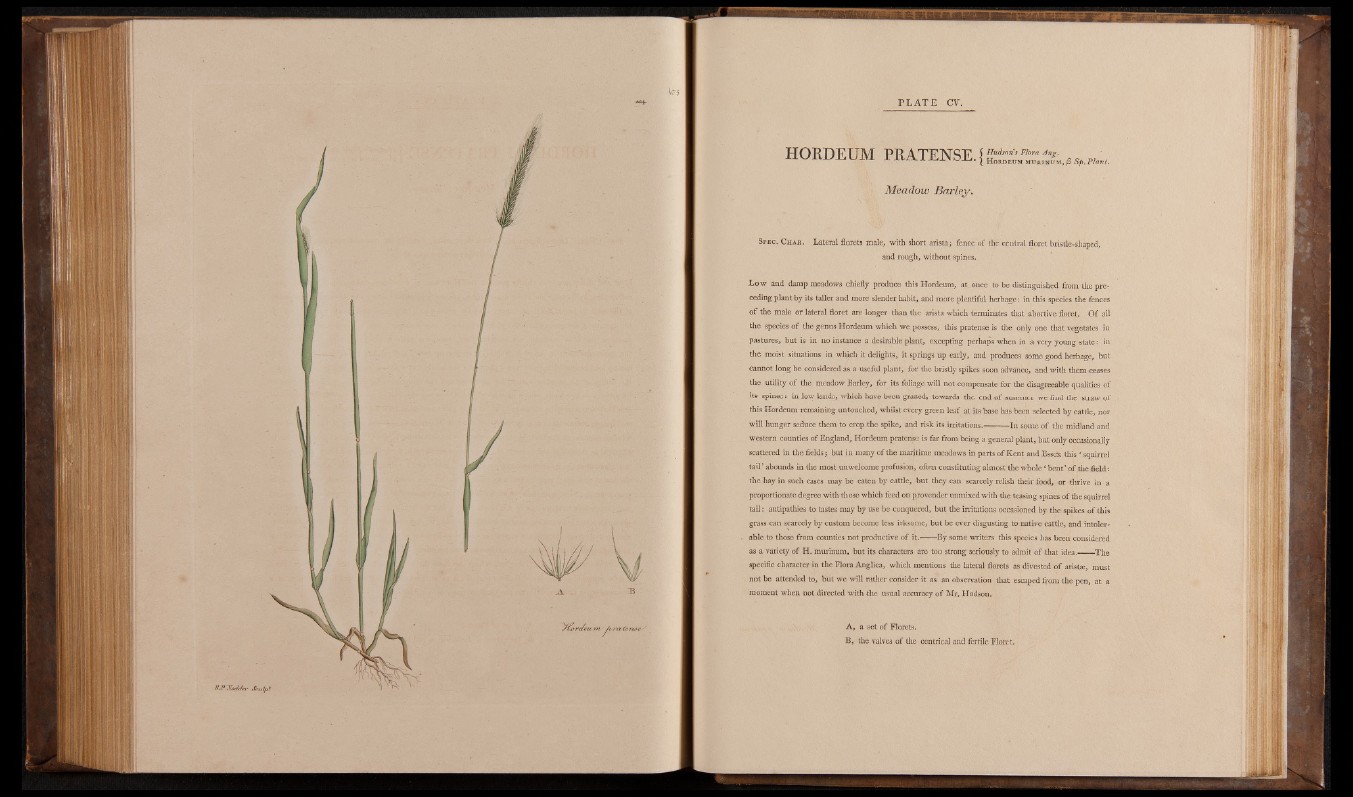
HORDEUM PRATENSE. {~udson's *Iora Ang- H ordeum m u e jn um ,/3 Sp.Plant.
Meadow Barley.
Spec. Char. Lateral florets male, with short arista; fence o f the central floret bristle-shaped,
and rough, without spines.
Low and damp meadows chiefly produce this Hordeum, at. once to be distinguished from the preceding
plant by its taller and more slender habit, and more plentiful herbage: in this species the fences
o f the male or lateral floret are longer than the arista which terminates that abortive floret. Of all
the species of the genus Hordeum which w e possess, this pratense is the only one that vegetates in
pastures, but is in no instance a desirable plant, excepting perhaps when in a very young state: in
the moist situations in which it delights, it springs up early, and produces some good herbage, but
cannot long be considered as a useful plant, for the bristly spikes soon advance, and with them ceases
the utility o f the meadow Barley, for its foliage will not compensate for the disagreeable qualities of
its spines: in low lands, which have been grazed, towards the end o f summer we find the straw of
this Hordeum-remaining untouched, whilst every green leaf at its base has been selected by cattle, nor
will hunger seduce them to crop the spike, and risk its irritations.--------- In some o f the midland and
western counties of England, Hordeum pratense is far from being a general plant, but only occasionally
scattered in the fields; but in many of the maritime meadows in parts o f Kent and EsseSc this | squirrel
tail ’ abounds in the most unwelcome profusion, often constituting almost the whole' bent’ of the field:
the hay in such cases may be eaten by cattle, but they can scarcely relish their food, or thrive in a
, proportionate degree with those which feed on provender unmixed with the teasing spines of the squirrel
tail: antipathies to tastes may by use be conquered, but the irritations occasioned by the spikes of this
grass can scarcely by custom become less irksome, but be ever disgusting to native cattle, and intolerable
to those from counties not productive o f it.------ By some writers this species lias been considered
as a variety of H. murinum, but its characters are too strong seriously to admit of that idea.------The
specific character in the Flora Anglica, which mentions the lateral florets as divested of aristae, must
not be attended to, but we will rather consider it as an observation that escaped from the pen, at a
moment when not directed with -the usual accuracy o f Mr. Hudson.
A, a set of Florets.
B, the valves of the centrical and fertile Floret.